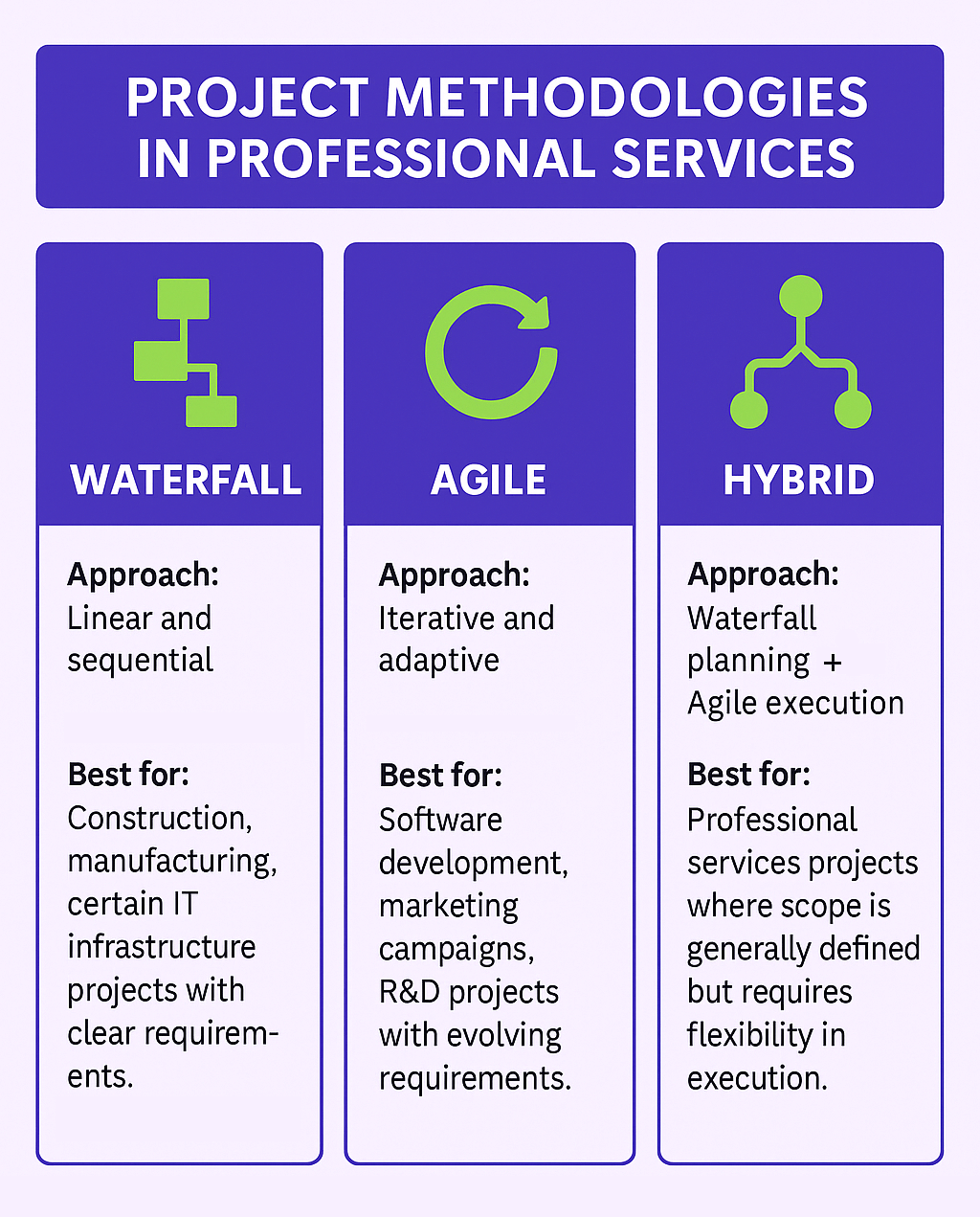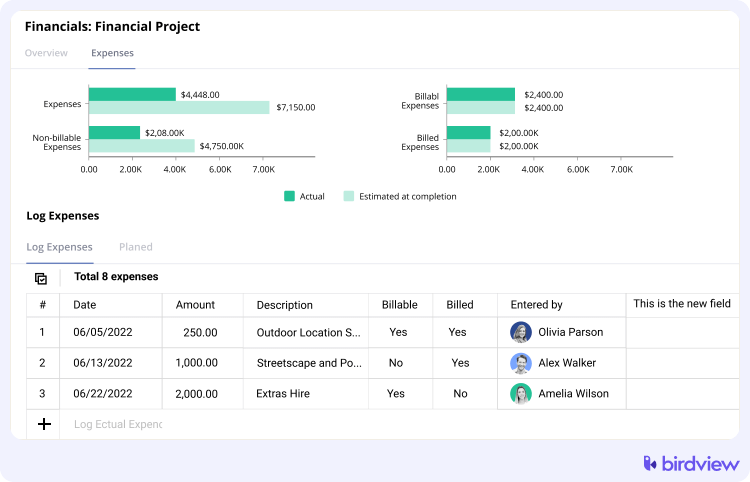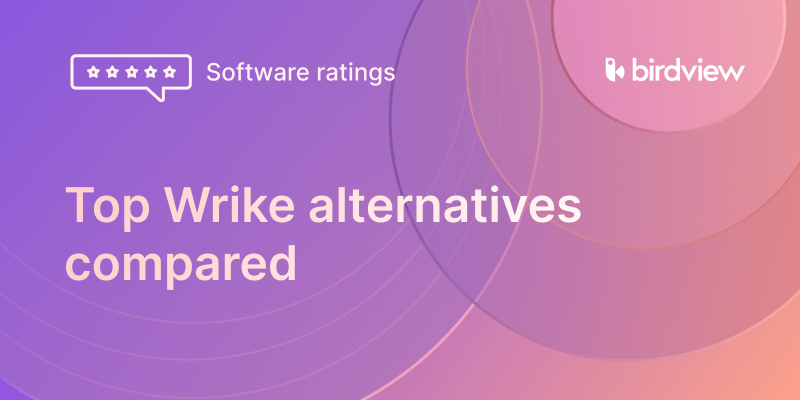But here‘s the challenge: managing multiple methodologies across your portfolio–Agile, Waterfall, Hybrid, or custom variations–gets complicated fast. Especially when you’re using tools that were built with just one methodology in mind. It creates friction. You lose flexibility. You end up juggling disconnected systems, duplicating data, and struggling to get a clear, centralized view of your project portfolio, resources, or financials.
What if your PSA software could adapt to the way your teams actually work? Whether you‘re managing traditional implementation projects or iterative Agile development cycles, the right Professional Services Automation (PSA) platform gives you the flexibility to plan, execute, and track every type of project–while keeping all your resource planning, budgets, and performance metrics in one unified system.
In this article, we‘ll explore the most common project methodologies used in professional services, the operational challenges of managing them side by side, and how flexible PSA software–specifically Birdview PSA–helps you support Agile, Waterfall, Hybrid, and other approaches without losing visibility, efficiency, or control.
In this article
Understanding project methodologies in professional services
Project methodologies provide a framework for organizing and managing project activities. The choice of methodology often depends on factors like project type, client preferences, scope clarity, risk level, and team structure.

Here‘s a breakdown of the three most common methodologies used in service-based project work:
Waterfall
A traditional, linear approach where each project phase follows the previous one in sequence: Requirements → Design → Development → Testing → Deployment. Waterfall works best when project scope is well defined from the start, and changes are unlikely.
Typical use cases: Construction, manufacturing, certain IT infrastructure projects with clear requirements.
Agile
An iterative approach focused on flexibility, collaboration, and delivering value incrementally. Projects are broken into short sprints or iterations, with continuous feedback and adaptation. Methodologies like Scrum and Kanban are popular Agile frameworks.
Typical use cases: Software development, marketing campaigns, R&D projects with evolving requirements.
Hybrid
The most common model in modern service firms, Hybrid blends the structured planning of Waterfall with Agile‘s adaptability. For example, a project might start with Waterfall-based phases (e.g., onboarding, design) and then move into Agile-style delivery for iterative execution. It seeks to leverage the strengths of both approaches.
Typical use cases: Many professional services projects where scope is generally defined but requires flexibility in execution, or hardware/software integration projects.
You may also like:
Work breakdown structure (WBS) in project management
How Agile-Waterfall hybrid benefit front-line businesses
Why methodology flexibility matters
Many professional services firms don‘t just use one approach–they often manage multiple methodologies at the same time across different clients, teams, or even phases within a single project. That‘s why flexibility in your project management tools–and especially in your PSA software–is essential.
In the next section, we‘ll look at the real-world challenges that arise when your tools don‘t support multiple methodologies–and why relying on rigid systems can slow your entire organization down.
Professional services firms often use different methodologies across different projects or even different phases of the same project.
The challenge: rigid tools limit methodological flexibility
While using varied methodologies is beneficial for project flexibility, managing them with tools designed for only one approach creates significant challenges:
- Tool silos: Using separate tools for Agile projects (e.g., Jira, Trello) and Waterfall projects (e.g., MS Project, spreadsheets) leads to fragmented data on resources, financials, and overall portfolio status.
- Inconsistent tracking: Different tools have different ways of tracking progress, metrics, and reporting, making it difficult to standardize processes or gain consistent visibility across the entire firm’s project work.
- Resource allocation complexity: Allocating resources effectively across projects managed in different systems is challenging, making it hard to see a consolidated view of resource availability and workload.
- Financial tracking issues: Linking project progress managed in different methodologies to financial outcomes (budget, costs, revenue) is difficult when the tools are not integrated.
- Limited reporting: Aggregating project performance data across diverse methodologies to generate portfolio-level reports for executives or PMOs requires significant manual effort.
- Hindered flexibility: If your primary tool is strictly rigid (e.g., a purely linear Gantt chart tool that struggles with iterative sprints) or purely iterative (a simple Kanban board with no timeline view), it can force teams into using a methodology that isn’t the best fit for the project.
You need a platform that offers flexibility in how projects are structured and tracked, without sacrificing centralized data and reporting.
How PSA software supports different methodologies
Professional Services Automation (PSA) software is built to handle the complexities of project delivery in professional services, which often involves managing a diverse portfolio of projects using various methodologies. A key strength of versatile PSA software is its adaptability in project structuring and tracking.
Here‘s how PSA software, specifically Birdview PSA, supports different project methodologies:
1. Flexible project structuring (WBS):
- What PSA software enables: Allows you to structure projects using a hierarchical Work Breakdown Structure (WBS), which can be adapted to fit sequential phases or iterative components.
- Birdview PSA Advantage: Birdview PSA utilizes a flexible WBS. For Waterfall projects, you can define clear phases and sequential tasks. For Agile or Hybrid projects, you can structure the WBS around epics, features, sprints, or iterative cycles.
Example: A Waterfall construction project can have phases like “Design,” “Procurement,” “Construction,” “Closeout” in the WBS. An Agile software project can have iterations like “Sprint 1,” “Sprint 2,” etc., or features as WBS elements.
2. Multiple project views:
- How PSA software supports this: Provides different ways to visualize and manage the project plan, catering to different methodological needs.
- Birdview PSA Advantage: Birdview PSA offers multiple integrated project views within the same system. You can use a Gantt chart for visualizing sequential timelines and dependencies (ideal for Waterfall). You can use a Kanban board for visualizing workflow and managing tasks iteratively (ideal for Agile). Task lists and calendars are also available.
Useful Tip: For a Hybrid project, use the Gantt chart for overall phase planning and key milestones, while using a Kanban board for managing task execution within specific phases or sprints.
3. Task and subtask management:
- How PSA helps: Project management software supports breaking down work into tasks and subtasks, assigning resources, and tracking progress.
- Advantage: Applicable across methodologies; tasks can represent phases (Waterfall) or user stories/sprint items (Agile).
4. Dependency tracking:
- How PSA helps: Allows defining dependencies between tasks (e.g., Task B cannot start until Task A is finished).
- Advantage: Essential for managing the sequence in Waterfall projects, but also useful in Hybrid projects for tracking key handoffs between iterative loops or phases.
5. Flexible progress tracking:
- How PSA software adapts to your workflow: Supports different methods for tracking task or project progress (e.g., percentage complete, status updates).
- Advantage: Adaptable to tracking phase completion (Waterfall) or completion of items within a sprint (Agile).
6. Integrated resource allocation:
- What PSA software enables across teams: Allows assigning resources to tasks or project phases, regardless of the project’s methodology.
- Advantage: Centralizes resource management. You can see resource workload and availability across all projects, whether they are Agile, Waterfall, or Hybrid.
Example: A developer is assigned to tasks in an Agile software project Kanban board and also to a specific phase in a Waterfall infrastructure project’s Gantt chart, and their workload is consolidated in Birdview PSA.
7. Time and expense tracking:
- How PSA helps: Provides consistent methods for tracking time and expenses against projects and tasks.
- Advantage: Time and expense data is collected consistently, regardless of methodology, enabling accurate cost tracking and billing for all projects.

8. Reporting and analytics:
- How PSA software delivers portfolio visibility: Aggregates data from all projects to provide portfolio-level reports and dashboards.
- Advantage: Enables consistent reporting on project status, budget, resource utilization, and profitability across the entire portfolio, even if different methodologies are used. Allows executives and PMOs to get a consolidated view.
Strategies for supporting agile, waterfall & hybrid methodologies with PSA
Successfully supporting multiple methodologies with PSA software takes more than flexible tools–it requires thoughtful setup, process clarity, and team alignment. Here‘s how to ensure Birdview PSA works seamlessly across agile, waterfall, and hybrid projects:
- Configure project templates for each methodology: Create distinct project templates in Birdview PSA for your common Waterfall, Agile, or Hybrid project types. Structure the WBS and initial tasks within the template to reflect the standard phases or sprints of that methodology.
Example: Have a “Waterfall Implementation Template” with sequential phases and a “Agile Development Template” with predefined sprint cycles or feature backlogs as placeholders.
- Utilize the appropriate project views: Train project managers to use the Birdview PSA project view that best suits their methodology for day-to-day management (e.g., Gantt for Waterfall, Kanban for Agile).
- Standardize key data points: Regardless of methodology, standardize key data points that must be tracked for reporting and resource management (e.g., estimated hours, assigned resource, task status, time logged, expense).
- Integrate agile-specific tools (if needed): If deeply integrated Agile development tools (like Jira) are necessary, integrate them with Birdview PSA to ensure essential data on task progress and time tracking flows between systems, consolidating resource and financial data in the PSA.
- Train teams on methodological application within PSA: Train project teams on how to apply the chosen methodology using the features available in Birdview PSA. For example, how to update progress for sprint tasks on the Kanban board, or how to manage dependencies on the Gantt chart.
- Use portfolio reports for a cross-methodology view: Leverage Birdview PSA’s portfolio-level reporting to get a consolidated view of all projects, regardless of methodology. This allows executives and PMOs to oversee project performance and resource utilization across the entire firm.
- Document methodology guidelines: Provide internal documentation outlining which methodologies are typically used for different project types and how they are managed within Birdview PSA.
Key benefits of using PSA software for multiple methodologies
Supporting different project methodologies with PSA software delivers significant benefits for professional services firms.
- Increased flexibility: Use the best methodology for each project without being constrained by your tools.
- Unified visibility: Gain a consolidated view of all projects, resources, and financials, regardless of the methodology used for individual projects.
- Standardized reporting: Generate consistent portfolio-level reports by aggregating data from diverse methodologies.
- Improved resource management: Allocate and manage resources effectively across all projects, seeing a single view of workload and availability.
- Better financial control: Track costs and revenue accurately across all projects, regardless of methodology.
- Enhanced efficiency: Streamline processes like time tracking, expense management, and reporting across all projects.
- Data-driven decision making: Make informed decisions based on consolidated data from your entire project portfolio.
Professional services teams need the flexibility to choose the right methodology for each client or project–whether that‘s Agile, Waterfall, Hybrid, or something in between. But juggling different approaches with rigid or disconnected tools often leads to fragmented workflows, siloed data, and missed opportunities.
That‘s where Professional Services Automation (PSA) software like Birdview PSA makes the difference. With flexible project structuring, integrated views (like Gantt and Kanban), centralized resource and financial tracking, and powerful portfolio reporting, Birdview PSA helps you manage any methodology–without compromising visibility or control.
Discover how Birdview PSA brings clarity and control to complex projects.
or
Other articles you might find helpful:
Kanban Project Management. Project Management Methodology
Comparing project management techniques: Agile vs. Waterfall
5 Effective Project Management Methodologies and When to Use
Project Management 101: What is Agile Project Management?
Frequently Asked Questions
1. What is a project methodology?
A project methodology is a framework providing a structure for organizing and managing project activities. It defines the phases, tasks, deliverables, and steps involved in completing a project, such as Waterfall, Agile, or Hybrid.
2. What are the main types of project methodologies used in professional services?
The main types include Waterfall, a linear sequential approach; Agile, an iterative approach focused on flexibility and incremental delivery; and Hybrid, which combines elements of both Waterfall and Agile to suit specific project needs.
3. Can PSA software support different project methodologies simultaneously?
Yes, versatile PSA software is designed to support different methodologies simultaneously across a project portfolio. It offers flexible project structuring and multiple integrated views that can be adapted to Agile, Waterfall, and Hybrid approaches within the same system.
4. How does PSA software support Waterfall methodology?
PSA software supports Waterfall methodology by allowing sequential project structuring using a WBS, providing Gantt charts to visualize timelines and dependencies, and enabling tracking of progress through distinct project phases.
5. How does PSA software support Agile methodology?
PSA software supports Agile methodology by offering task management organized into sprints or iterations, providing visual tools like Kanban boards for workflow management, and supporting flexible progress tracking within iterative cycles.
6. How does PSA software support Hybrid methodology?
PSA software supports Hybrid methodology by offering flexible project structuring that can combine sequential phases (like in Waterfall) with iterative task execution within those phases (like in Agile), and providing multiple views (Gantt and Kanban) within the same project.
7. Does PSA software help manage resources across projects using different methodologies?
Yes, a key benefit of PSA software is centralizing resource management. It allows you to allocate and manage resources across all projects, regardless of the methodology used for each, providing a single view of resource workload and availability.
8. Can PSA software integrate with Agile-specific tools like Jira?
Some PSA software solutions offer integrations with Agile-specific tools like Jira to ensure essential data on task progress and time tracking flows between the specialized development tool and the PSA software for consolidated resource and financial management.
9. What are the benefits of using PSA software to support varied methodologies?
Benefits include increased flexibility to use the best methodology for each project, unified visibility across the entire project portfolio, standardized reporting despite methodological diversity, improved resource management across all projects, and better financial control and efficiency.
10. How does Birdview PSA support different project methodologies?
Birdview PSA supports different methodologies through its flexible WBS for structuring projects, multiple integrated project views (Gantt, Kanban, Task List), robust task and dependency management, centralized resource management, integrated time/expense tracking, and comprehensive portfolio reporting, allowing firms to manage Agile, Waterfall, and Hybrid projects effectively within one platform.



